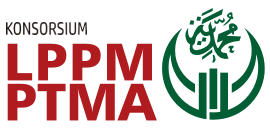Test of ?-Amylase Inhibition Activity in Ethanol Extract of Fennel Leaves (Foeniculum vulgare Mill.) Using Elisa Reader
DOI:
https://doi.org/10.53017/ujhs.1Keywords:
?-amylase enzyme, Fennel leaves, Glucose reductionAbstract
Fennel has been cultivated in Indonesia as a spice and medicinal plant. Fennel can produce fennel oil, which is the result of distillation from dry and ripe fennel fruit powder, while fennel leaves are mainly cooked to make vegetables. The ?-amylase enzyme plays an important role in the breakdown of oligosaccharides and disaccharides into monosaccharides so that they are ready for absorption. Inhibition of the ?-amylase enzyme can delay and prolong the digestion time of carbohydrates, causing a decrease in the rate of glucose absorption and preventing an increase in postpandrial plasma glucose levels. Therefore, this study aims to investigate the ethanol extract of fennel leaves (Foeniculum vulgare Mill.) Against the inhibitory activity of the ?-amylase enzyme using Elisa Reader. The experimental research method was applied to test the ethanol extract of secondary metabolite compounds from fennel leaves against the inhibition of ?-amylase enzyme activity. The results showed that the IC50 value in the fennel leaf extract was 1.432 ?g/mL while the IC50 acarbose as a comparison was 3.340 ?g/mL. In conclusion, the ethanol extract of fennel leaves can be used to reduce blood sugar levels.
Downloads
References
D. A. Prahesti, S. Pujiyanto, and M. G. I. Rukmi, “Isolasi, Uji Aktivitas, dan Optimasi Inhibitor ?-Amilase Isolat Kapang Endofit Tanaman Binahong (Anredera cordifolia)(Ten.) Steenis,” Jurnal Akademika Biologi, vol. 7, no. 1, pp. 43–51, 2018.
N. Sarwar et al., “Diabetes mellitus, fasting blood glucose concentration, and risk of vascular disease: a collaborative meta-analysis of 102 prospective studies.,” Lancet (London, England), vol. 375, no. 9733, pp. 2215–2222, Jun. 2010, doi: 10.1016/S0140-6736(10)60484-9.
C. W. Yancy et al., “2013 ACCF/AHA guideline for the management of heart failure: executive summary: a report of the American College of Cardiology Foundation/American Heart Association Task Force on practice guidelines,” Circulation, vol. 128, no. 16, pp. 1810–1852, 2013.
S. Sumarmiyati and S. W. P. Rahayu, “Development potential of local traditional medicinal plants at a scale of home-based industry to support medicine and food self-sufficiency in Samarinda, East Kalimantan,” in Prosiding Seminar Nasional Masyarakat Biodiversitas Indonesia, 2015, vol. 1, no. 2, pp. 330–336.
E. M. Kridati, E. Prihastanti, and S. Haryanti, “Rendemen Minyak Atsiri dan Diameter Organ serta Ukuran Sel Minyak Tanaman Adas (Foeniculum vulgare Mill) yang Dibudidayakan di Kabupaten Semarang dan Kota Salatiga,” ANATOMI dan FISIOLOGI, vol. 20, no. 1, pp. 1–17, 2012.
N. A. K. Wardani, “Enzim ?-Amilase Inhibitor Pada Ekstrak Air Kacang Merah (Phaseolus vulgaris L.) untuk Penanggulangan Diabetes Melitus,” Jurnal Ilmu Pangan dan Hasil Pertanian, vol. 1, no. 2, pp. 50–59, 2017.
M. I. Kazeem, T. V. Dansu, and S. Adeola, “Inhibitory Effect of Azadirachta Indica A. Juss Leaf Extract on the Activities of ?-Amylase and ?-Glucosidase,” Pakistan Journal of Biological Sciences, vol. 16, no. 21, pp. 1358–1362, 2013, doi: 10.3923/pjbs.2013.1358.1362.
Downloads
Published
How to Cite
Issue
Section
License
Copyright (c) 2021 Dwi Bagus Pambudi, Nuniek Nizmah Fajriyah, Retno Aulia Maharisti

This work is licensed under a Creative Commons Attribution-NonCommercial 4.0 International License.





